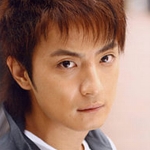Nattō
Natto is typically eaten on rice
is a traditional
Japanese food made from
fermented soybeans, popular especially for
breakfast. As a rich source of
protein, nattō and the
soybean paste
miso formed a vital source of
nutrition in
feudal Japan. For some, nattō can be an
acquired taste due to its powerful
smell, strong flavor, and sticky consistency. In Japan nattō is most popular in the eastern regions, including
Kantō,
Tōhoku, and
Hokkaido.
History
The materials and tools needed to produce nattō (soybeans and straw) were commonly available in Japan since ancient times, so the discovery could have happened as early as the Jōmon period. It is also possible that the product was discovered independently by numerous people at different times. The sources differ about the earliest origin of nattō. One source puts the first use of nattō in the Jōmon period between 10,000 and 300 BC. According to other sources the product may have originated in China during the Zhou Dynasty (1134 - 246 BC). Another story is that Minamoto no Yoshiie was on a battle campaign in northeastern Japan between 1086 and 1088 when one day in 1083 they were attacked while boiling soybeans for their horses. They hurriedly packed up the beans, and did not open the straw bags until a few days later, by which time the beans had fermented. The soldiers ate it anyway, and liked the taste, so they offered some to Yoshiie, who also liked the taste. A third source places the origin of nattō more recently, in the Edo period (1603 to 1867).[citation needed]
One significant change in the production of nattō happened in the Taisho period (1912 - 1926), when researchers discovered a way to produce a nattō starter culture containing Bacillus natto without the need for straw. This greatly simplified the production process and permitted more consistent results.
Appearance and consumption
The first thing noticed by the uninitiated after opening a pack of nattō is the very strong ammoniacal smell, akin to strong cheese. Stirring the nattō produces lots of spiderweb-like strings. The nattō itself has a nutty, savory, somewhat salty flavor that belies its odor.
Nattō is most commonly eaten at breakfast to accompany rice, possibly with some other ingredients, for example soy sauce, tsuyu broth, mustard, scallions, grated daikon, okra, or a raw quail egg. In Hokkaidō and northern Tohoku region, some people dust nattō with sugar. Nattō is also commonly used in other foods, such as nattō sushi, nattō toast, in miso soup, salad, as an ingredient in okonomiyaki, or even with spaghetti or as fried nattō. A dried form of nattō, having little odor or sliminess, can be eaten as a nutritious snack. There is even nattō ice cream.
Nattō is often considered an acquired taste and the perceived flavor of nattō can differ greatly between people; some find it tastes very strong and cheesy and may use it in small amounts to flavor rice or noodles, while others find it tastes "bland and unremarkable", requiring the addition of flavoring condiments such as mustard and soy sauce. Many non-Japanese find the taste very unpleasant, while others relish it as a delicacy. Some manufacturers produce an odorless or low-odor nattō. The split opinion about its appearance and taste might be compared to Vegemite in Australia and New Zealand, blue cheese in France, lutefisk in Norway and Sweden, Mämmi in Finland and Marmite in the UK. Even in Japan, nattō is more popular in some areas than in others. Nattō is known to be popular in the eastern Kantō region (Tokyo), but less popular in Kansai (Osaka, Kobe). About 236,000 tons of nattō are consumed in Japan each year.
Production process
Nattō is made from soybeans, typically a special type called nattō soybeans. Smaller beans are preferred, as the fermentation process will be able to reach the center of the bean more easily. The beans are washed and soaked in water for 12 to 20 hours. This will increase the size of the beans. Next, the soybeans are steamed for 6 hours, although a pressure cooker can be used to reduce the time. The beans are mixed with the bacterium Bacillus subtilis natto, known as nattō-kin in Japanese. From this point on, care has to be taken to keep the ingredients away from impurities and other bacteria. The mixture is fermented at 40°C for up to 24 hours. Afterwards the nattō is cooled, then aged in a refrigerator for up to one week to add stringiness. During the aging process at a temperature of about 0°C, the Bacilli develop spores, and enzymatic peptidases break down the soybean protein into its constituent amino acids.
Historically, nattō was made by storing the steamed soy beans in rice straw, which naturally contains B. subtilis natto. The soy beans were packed in straw and then left to ferment. The fermentation was done either while the beans were buried underground underneath a fire or stored in a warm place in the house as for example under the kotatsu.
End product
Today's mass-produced nattō is usually sold in small polystyrene containers. A typical package contains 2 or 3 containers, occasionally 4 containers, each of 40 to 50 g. One container typically complements a small bowl of rice. It usually includes a small packet of tsuyu and another packet of karashi, a type of mustard. Other flavors of sauce, such as shiso, are available.
Mito City and Kumamoto Prefecture are famous as nattō-producing districts.
Outside of Japan, nattō is sometimes sold frozen, and must be thawed before consumption.
Medical benefits
It is often said in Japan that nattō is good for one's health, and these claims can be backed by medical research. One example is Pyrazine contained within nattō. Pyrazine is a compound which, in addition to giving nattō its distinct smell, reduces the likelihood of blood clotting. It also contains a serine protease type enzyme called nattokinase[1] which may also reduce blood clotting both by direct fibrinolysis of clots, and inhibition of the plasma protein plasminogen activator inhibitor 1. This may help to avoid thrombosis, as for example in heart attacks, pulmonary embolism, or strokes. An extract from nattō containing nattokinase is available as a dietary supplement. Studies have shown that oral administration of nattokinase in enteric capsules leads to a mild enhancement of fibrinolytic activity in rats[2] and dogs. It is therefore plausible to hypothesize that nattokinase might reduce blood clots in humans, although clinical trials have not been conducted. Another study suggests the FAS in natto is the substance which initiates fibrinolysis of clots, which accelerates the activity of not only nattokinase but urokinase.[3]
Nattō also contains large amounts of Vitamin K, which is involved in the formation of calcium-binding groups in proteins, assisting the formation of bone, and preventing osteoporosis. Vitamin K1 is found naturally in seaweed, liver and some vegetables, while vitamin K2 is found in fermented food products such as cheese and miso. Nattō has very large amounts of vitamin K2, approximately 870 micrograms per 100 grams of nattō.
According to a study fermented soybeans, such as natto, contains Vitamin PQQ, which is very important for the skin.[4] PQQ existing in human tissues is derived mainly from diet.
According to the recent studies, polyamine suppresses excessive immune reactions, and natto contains a much larger amount of it than any other food.[5] Dietary supplements containing the substances extracted from natto such as polyamine, nattokinase, FAS and vitamin K2 are available.
Nattō also contains many chemicals alleged to prevent cancer, as for example daidzein, genistein, isoflavone, phytoestrogen, and the chemical element selenium. However, most of these chemicals can also be found in other soy bean products, and their effect on cancer prevention is uncertain at best. Recent studies show nattō may have a cholesterol-lowering effect.[6]
Nattō is also said to have an antibiotic effect, and its use as medicine against dysentery was researched by the Imperial Japanese Navy before World War II.[7]
Nattō is claimed to prevent obesity, possibly due to a low calorie content of approximately 90 calories per 7-8 grams of protein in an average serving. Unverified claims include improved digestion, reduced effects of aging, and the reversal of hair loss in men due to its phytoestrogen content, which can lower testosterone that can cause baldness. These conjectured physiological effects of eating natto are based on biochemically active contents of nattō, and have not been confirmed by human study.
Nattō is also sometimes used as an ingredient of pet food, and it is claimed that this improves the health of the pets.[8]
Gallery
A nattō legend in a supermarket helps to differentiate varieties of bean | Natto is marketed in many ways: This packet includes collagen |
|
Sourcehttp://en.wikipedia.org/wiki/Natto






















































